#Itihasa
Explore tagged Tumblr posts
Text
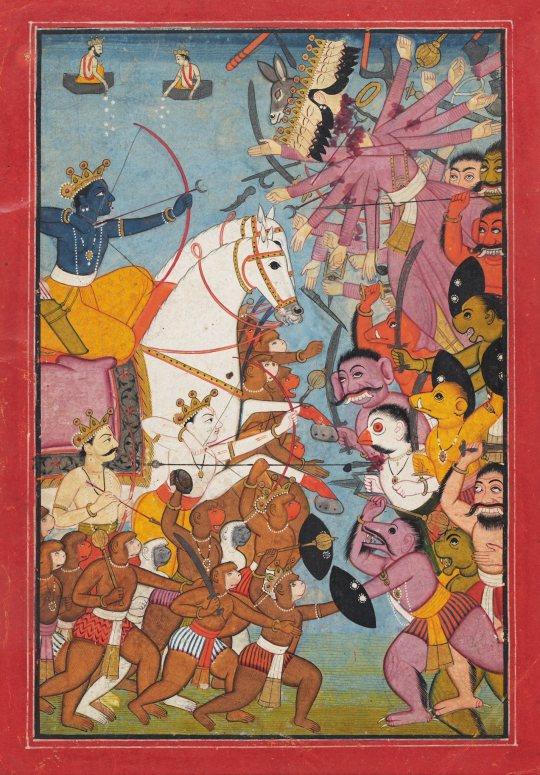
The great battle between Rama and Ravana c 1780, Guler style, Pahari
#Rama#Ravana#Dussehra#Ramayana#Guler#Pahari#Hindu Gods#Itihasa#itihas#vishnu avatar#Vijayadashami#Lakshmana#Sugriva#Hanuman#hinduism#hindu epic#hindu mythology
128 notes
·
View notes
Text
Low-key waiting for more people to realise/know/talk about how there was no Sita-Swayamvar in the Orginal Valmiki Ramayan....
Because I think this single thing can give rise to such beautiful fictions and stories and a lot more variety
We all know Ram Sita loved eachother very much. They were eachother's everything and even beyond. One soul two bodies. All of the love.
IMPORTANT: I am taking Valmiki Ramayan as canon and other every single source or scriptures as ahemm... “fanfiction” ... *gasp* how dare I! Yes... But live with it
But canonically they had not met eachother. Not before the breaking of Hara Dhanu. In other versions they meet at the Swayamvar where they both fall in love at first sight and all. Even some version have a pushpa vatika scene where they meet and fall in love...
SO my question, when did they fall in love in the original version???
Ram had not scene Sita, before Janak told them about the entire thing of how he had found Sita, and whom he wanted her to marry.
I would be guessing, it was the time between, after breaking the bow and the ACTUAL marriage. I mean Janak surely needed some time to send letters to Dashrath and for the Ayodhya family to come to Mithila right? (Who am I kidding ofcourse it did)
I am taking some... 1-2 months..?? If that would be enough... Or too much I don't know.
So now we are left with a lot of time to... Hmmm set everything. Honestly. First meeting? Accidentally first meeting?? Eager to meet the other? Anxious?? Maybe shy or nervous? Or scared? Or totally clueless??
How did they fall in love?? Was it love at first sight?? Gradually falling for one another? Or did they fall in love even before meeting eachother??
Was Lakshman supportive? Did he tease Ram? Was he confused himself??
Did Sita fall first? Or was it Ram?? WHO CONFESSED FIRST?? WHO TOLD THEY LOVED THEM?? WHAT HAPPENED THEN??
I want to know so many things. Read so many stories. So much to could be done...
...sigh
Y'all are sleeping on such a good opportunity to write amazing fics my lawrd!!
I would be writing 5 libraries if I was good with arranging words honestly
ALSO: No I am not playing with anyone's emotions or believe or what they love to believe. Because Ik almost all of you prefer the Swayamvar version one... even I do, yes. Because that is the cutest thing ever. Even better with the pushpa vatika scene.
I am just stating what's there in the Valmiki Ramayan. If you don't like my post dni just scroll past it or even block me idc. But dare you come to my comments or reblogs and shit about me or try to pick a fight
#ramayan#valmiki ramayana#ramayana#valmiki ramayan#valmikiramayan#sita ram#ram#rama#sita#ram x sita#sita x ram#ramblr#hindu mythology#hindublr#itihasa#desiblr#desi tumblr#desi tag#desi#desi shit posting
74 notes
·
View notes
Text
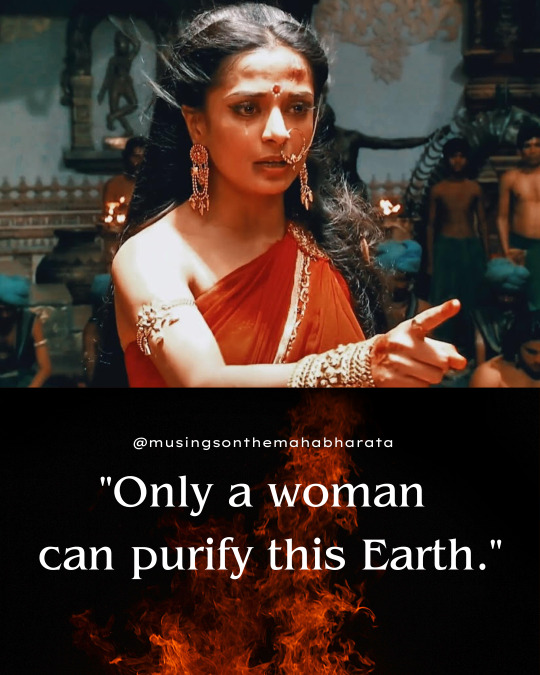
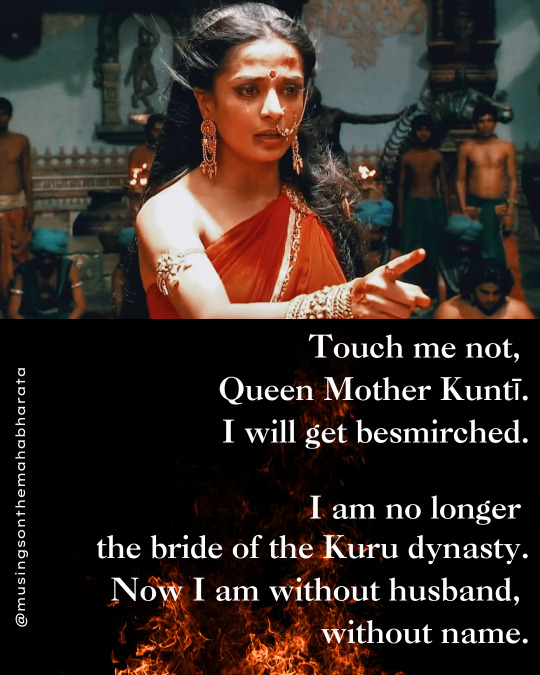
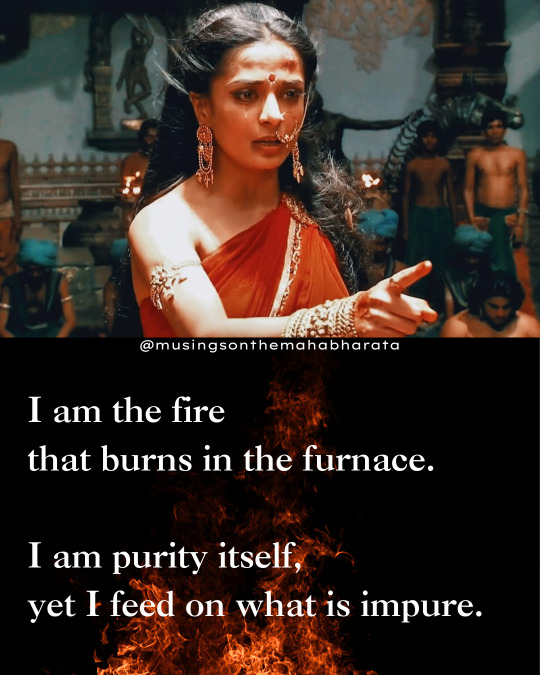
excerpt from an audio-translation I worked on with a colleague of mine; we translated Draupadī's imposing speech as rendered in modern Mahābhārat retellings. Draupadī utters this speech after she is dragged to the royal hall by her hair, and is assaulted & sexually harassed by the men of the Kuru dynasty. she renounces her status as a wife; in the Sanskrit Mbh, symbolically, by refusing to tie her hair again, while in modern renderings, explicitly, by directly renouncing her husbands who passively watched her humiliation.
in this sequence, Draupadī curses the Kurus. the curse bears similarities across the Sanskrit & modern tellings; that just as she bled in the sabhā (royal court / hall), so will all the men bleed on the battlefield, and just as she wept with her hair untied, so will their women cry before their corpses with their hair dishevelled (tied hair was the marking of a wife / bride, untied hair, of a widow).
photo: Pooja Sharma as Draupadī. Pooja is my Draupadī.
#mahabharata#mahabharat#mahabharatam#mahabharata art#pooja sharma#mahabharat star plus#sabha#draupadi's disrobing#draupadi#yajnaseni#hinduism#hindu mythology#itihasa#sanskrit#goddess#shakti#kauravas#kuru dynasty#krishna#sanatana dharma#religion
218 notes
·
View notes
Text
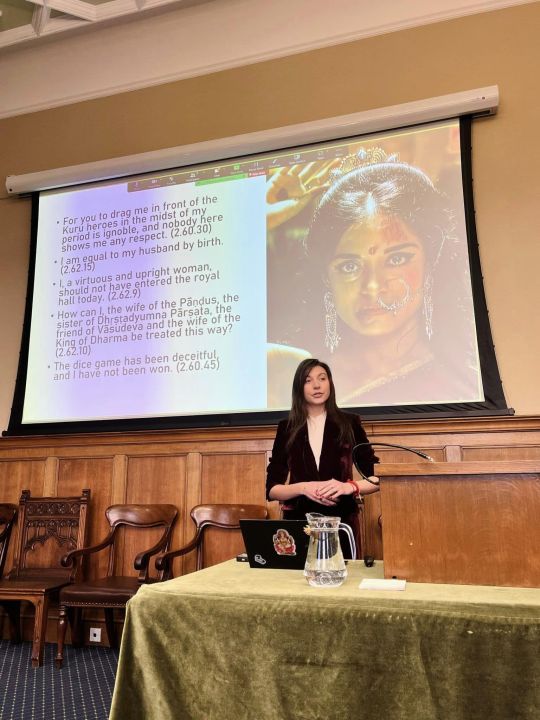
a joy to present my PhD work at the School of Divinity [Edinburgh] yesterday on my first research panel 😊 i talked about the gendered politics inscribed in the body of Draupadī, the Mahābhārata's heroine. i argued that it is significant that a text such as the Mahābhārata, which holds so much religious, cultural and spiritual weight, includes the story of a sexually assaulted woman, and, moreover, one of divine origin, because it offers women subjected to gendered violence the opportunity to unearth psychological comfort in Draupadī's story, and the opportunity to shed shame and fears of impurity rooted in varied internalisations of social or religious messages. through the prism of shared experience, the trauma is voiced and processed, which percolates in the social stratum, where, by claiming and reimagining Draupadī's symbol, women ask for and enact socio-political change. i am exploring this movement in my thesis. ❤️🔥
astounding to listen to & learn from the presentations of the colleagues who shared the panel with me, and to engage with the work differently during the q&a portion; openings to approach the work differently, freshly, in ways i wouldn't be prone to without external stimulus.
thank you @ishitahp for the photos & video! 🫶
#draupadi#mahabharata#mahabharat#phd#phd student#academia#women in academia#mahabharatam#yajnaseni#religion#gender#feminism#female empowerment#female experience#itihasa#hinduism#south asia#pooja sharma#draupadi art#draupadi's disrobing#krishna
29 notes
·
View notes
Text


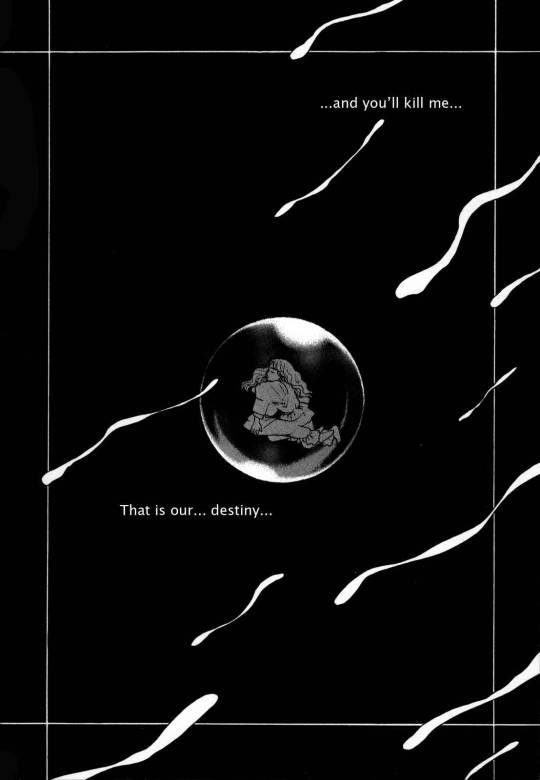
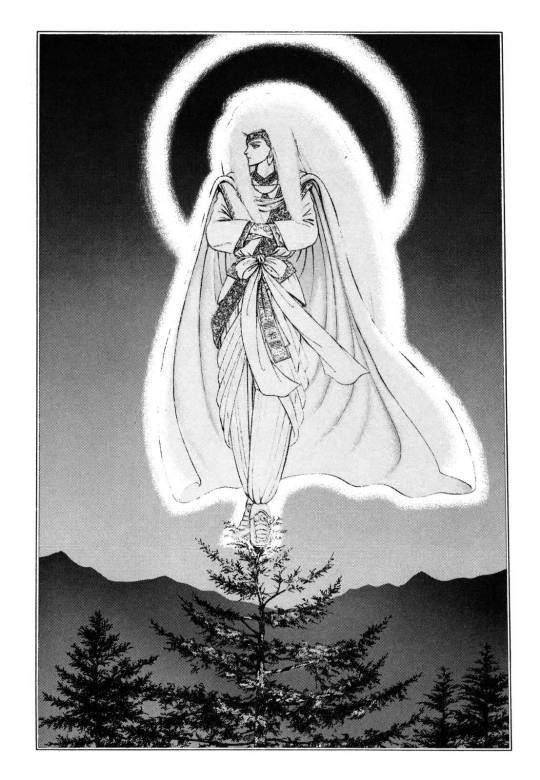

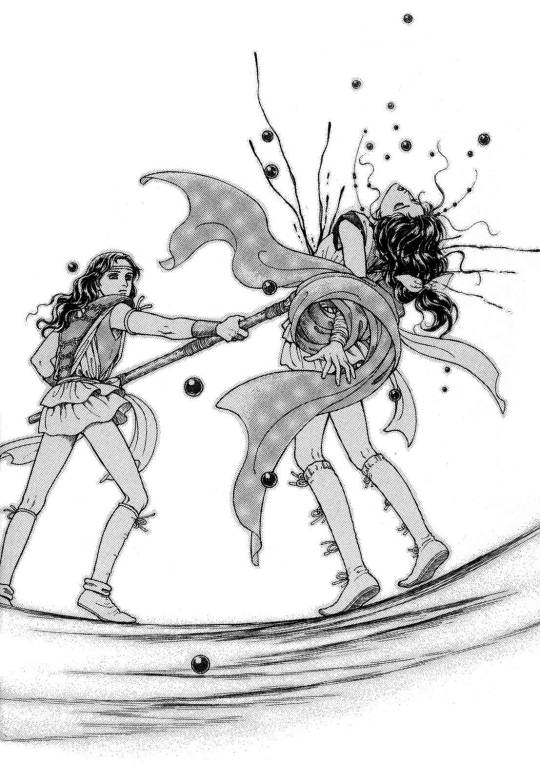
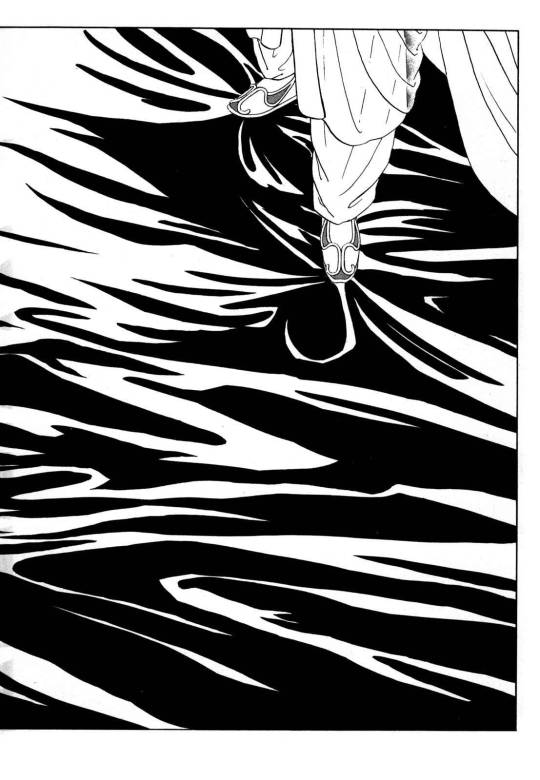
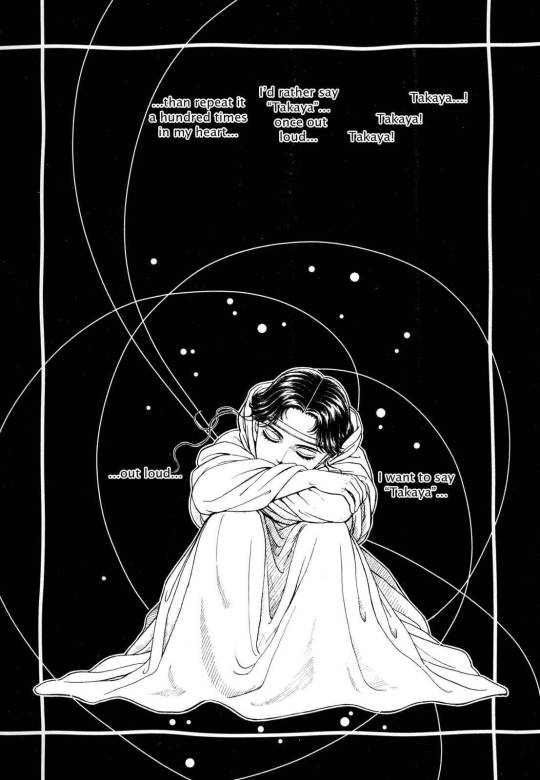
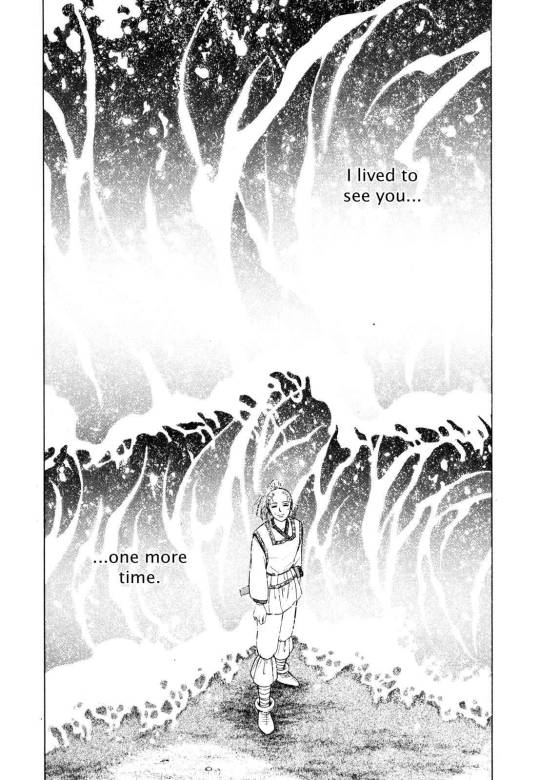
Some of my favorite pages from the manga Itihasa by Mizuki Wakako
"Water becomes water when it flows. Wind becomes wind when it blows. And Humans become human when they waver."
3 notes
·
View notes
Note
Hey Meat! Currently combing through Matt Clayton’s Hindu Mythology: A Captivating Guide to Hindu Myths, Hindu Gods, and Hindu Goddesses and I was wondering if you could give like a little introduction to the main concepts/gods/goddesses? I’m seeing many terms like “the Veedas” and “the Shastras” as I go through it and I’m picking up context clues and I could probably google them but I’d like to hear from actual people and especially those who know and care deeply about these Myths (like you <3). So… can you help me? /gen
Heyyy Neptune! First of all I apologize it took me so long to answer you dfnsfjfdjg forgive meeee
I love how ardently you're researching Hinduism. I haven't really read his book, but I'll help you with giving you an overview of it, so to speak.
Firstly lemme tell you about the Vedic knowledge system, which consists of:
Vedas
Vedangas
Upavedas
Vedas: These are the oldest known scriptures of Hinduism. The religion has four Vedas, namely the:
Rig Veda (RV): book of hymns to the deities.
Yajur Veda (YV): book of mantras and worship rituals
Sama Veda (SV): book of chanting songs
Atharva Veda (AV): book of procedures of everyday life
Each of them have four subdivisions:
Samhitas (mantras, hymns, prayers and benedictions)
Brahmanas (explanations and instructions on performing Vedic rituals)
Aranyakas (texts on the meaning and symbolisms of rituals and ceremonies basically). They were mainly composed by sages who meditated in the wilderness, hence the name of the texts (aranya means forest in Sanskrit).
Upanishads (texts on meditation, philosophy and spiritual knowledge)
Upasanas (additional). These are texts on worship.
Vedangas: These are the six auxiliary disciplines of Hinduism, and are heavily linked to the Vedas. They are:
Shiksha: Study of phonetics
Vyakarana: Study of grammar
Chhandas: Study of poetic metres and rhythm
Niruktas: Study of etymology
Jyotishya: Study of astrology and astronomy
Kalpa: Study of rituals and guide to ritual instructions
Upavedas: These are texts regarding certain fields of work like:
Ayur Veda: Study of medicine and life sciences
Gandharva Veda: Study of music, art and dance
Dhanur Veda: Study of archery and warfare
Arthashastra: Study of business and administration
Speaking of Shastras, they are kinda similar to Upavedas, and deal with certain fields of knowledge, like we saw in the case of Arthashastra. There are many shastras:
Bhautikashastra - Study of physics
Rasashastra - Study of chemistry
Jivashastra - Study of biology
Vastushastra - Study of architectural science
Shilpashastra - Study of mechanical arts and sculpture
Nitishastra - Corpus on ethics and policies
Alamkarashastra - Study of rhetorics
Kavyashastra - Study of poetics
Sangitashastra - Study of music
Natyashastra - Study of theatre and dance
Yogashastra - contains instructions and teachings on yoga
Mokshashastra - contains instructions and teachings on moksha
Nyayashastra - contains instructions and teachings on justice, laws and judgement
Dharmashastra - contains instructions and teachings on dharma
Kamashastra - contains instructions and teachings on love, desire and pleasure.
And so on.
Then we have the Puranas, which are texts on various topics, usually legends and lores. A few examples are:
Brahma Purana
Vishnu Purana
Matsya Purana
Kalika Purana
Vamana Purana
Shiva Purana
Agni Purana
Bhagavata Purana
And so on. The latest Purana ever written was the Kalki Purana, which was around 400-600 years ago. It is believed that Ved Vyasa (the author* of the epic Mahabharata) composed all these Puranas as well. But many disagree.
*some believe Ved Vyas got Ganesh (the God of wisdom, success and remover of obstacles, and the son of Shiva) to write the Mahabharata for him. While some believe Ved Vyas wrote it himself.
Then we have the Sutras which are aphoristic (concise expression of a general truth/principle) texts. Some examples are:
Brahma Sutras
Yoga Sutras
Nyaya Sutras
Kama Sutra
and so on.
Then comes Itihasa (historical texts), which include the two major epics of Hinduism, namely:
Ramayana (composed by Valmiki)
Mahabharata (composed my Vyasa/Ganesh)
Read the epics I'll not spoil it for ya heehee
Now, for the Gods. Oh man there are so many, but not 33 crore (1 crore = 10 million), contrary to popular belief, but rather 33 types.
In the very beginning of the pantheon, the main Gods were:
Indra (god of thunder and rain and the King of Gods)
Agni (god of fire)
Mitra (god of friendship, sun, daylight)
Varuna (god of waters, oceans, night time)
Vayu (wind god)
Soma (wind god, also sometimes called the moon god)
Ushas (goddess of dawn)
Ashwins (twin solar gods of medicine and sons of Surya)
Surya (Sun god)
Rudra (another wind/storm god who later became another form of Shiva)
Vishnu (bro doesn't have any specific assigned field tbh)
And a few others like Brihaspati (Jupiter god), Pushan (solar god of meetings, marriages, roads and cattle), Savitr (god of speed and cosmos) and many others.
Now there was this supreme vague deity in the Vedas. It's not Brahman yet. They (for the lack of a better set of pronouns) appear later. But it is some kind of supernatural force that let to the creation of this universe, and was initially mostly referred to as Prajapati (sometimes it wasn't one being though, rather a group), from what I can infer. Some may even called em Purusha. In the link you'll also get the First Creation Myth of Hinduism.
There is also an agnostic section in the Rig Veda, known as the Nasadiya Sukta. In this specific section we know there's some form of a supreme deity, but it's very vague as to what it is.
Moving on, in around mid-Vedic period, Vishnu became heavily popular, and two new deities came into being, namely Brahma (who soon got the title of Prajapati) and Shiva (from Rudra because previously Rudra had an alternative name called Siva. So Ig that's where 'Shiva' stemmed from. But again not sure).
Vishnu and Shiva became extremely popular, to the point that they got an entire sect of people dedicated to each of em, hence Vaishnavism and Shaivism (respectively) were born. Vaishnavs heralded Vishnu to be the Supreme God, while Shaivites heralded Shiva to be the Supreme God. (Soon Harihar or Vishnu-Shiva sect also emerged where both the Gods were considered the same, and hence both were the Supreme Gods, or Supreme God, if we consider them one entity) But in the future we can see Vaishnavism took over the spotlight, and finally during the age of the epics, Sanatan Dharma was born, which eventually became synonymous with Hinduism, and now almost everyone considers Vishnu is the Supreme Lord (while many others consider it to be the Brahman, who Vishnu, Shiva and Brahma are a part of).
Vishnu actually gained the most popularity from the two epics that I've mentioned, and the first one is almost entirely surrounded around his avatar, Ram (yes he has avatars now). His most popular avatars include Ram and Krishna, and the latter has an entire organization dedicated to him (ISKON or International Society for Krishna Consciousness), and this org considers THIS avatar as the Supreme Lord, and actually considers Vishnu as his avatar, not the other way around. Krishna also appears in the famous Bhagavad Gita, which is the prime philosophy book of guidelines for the Hindus today.
Buckle up, it's about to get more confusing cuz now Vishnu is our main character for a while (bro has HEAVILY influenced this religion atp there's no turning back for him now). His evolution is so interesting cuz who'd have thought in the Rig Vedic times that he'd grow up to be THIS popular TOT. Not Indra for sure xD.
Anyhoo so about Vishnu's avatars. He has ten main avatars that appear through the cycle of Hindu Yugas (eras):
Matsya: Big fishiee. Some paintings portray him as a merman tho.
Kurma: Giant tortoise go brrr.
Varaha: A boar-man :D. Pumba's gunna vibe with him fs.
Narasimha: Very angy lion-man. Will be besties with Sekhmet in a heartbeat i just know it.
Vamana: Cute "lil" dwarf (covered the universe in three steps)
Parshurama: Appears in the Mahabharata
Rama: Main character of Ramayana (hence the name).
Krishna: One of the main characters of the Mahabharata, and the younger brother of Balarama.
Balarama/Buddha (sources vary)
Kalki (future avatar)
Now Mohini is the female form of Vishnu. Whether or not she counts as an avatar is debated. She's the goddess of beauty and a seductress that lures bad guys (mostly Asuras) and then kills them, or atleast teaches them a lesson (but she also attracts the devas sometimes. Shiva for example). So yeah.
His wife is Lakshmi, who's the goddess of wealth, fortune, power, beauty, fertility and prosperity. She also has avatars btw.
Now the Second Creation Myth is pretty messy. Different sects have different takes on it. Usually it is considered that:
Brahma created the universe (or universes in case of the multiverse version).
Vishnu preserves the universe
Shiva destroys the universe
This process is considered cyclic and after the destruction Brahma creates a new universe, and it keeps repeating.
The origin of these three gods are also debated. Some say Brahma created Vishnu and Shiva, some say Vishnu created Brahma and Shiva, some say Lakshmi created Brahma, some say Shiva created Brahma and Vishnu. Some say Vishnu and Shiva are two of the Adityas (comprising of Indra, Agni, Mitra, Varuna, Surya etc.), and hence the children of Kashyap and Aditi.
Quick desc of Shiva is that he's the god of destruction, rebirth, time, benevolence etc. He also has avatars, plus a female form, called Shivani. His wife is Parvati, who ALSO has avatars, primarily Kali, Durya, Gauri etc. Sometimes Parvati and Lakshmi's avatars overlap. Sometimes, Vishnu and Parvati's avatars overlap (like Krishna-Kali).
He and his wife have two sons- Ganesha (god of wisdom, beginnings, remover of obstacles etc.), and Kartikeya/Murugun/Skanda (god of war). Who's the elder one is debated but usually Kartikeya is considered older.
Also Brahma's wife is Saraswati (goddess of wisdom, knowledge, music, flowing water, abundance etc.), who was born from him. Bro has faced some issues with falling for ppl (women) he has created actually lol, which is why he was cursed by Shiva and even lost one of his heads, hence ending up with four heads, when he initially had five. Check this site out as to why he was cancelled by Mahadev (another name of Shiva).
Now we have two Holy Trinities:
Brahma, Vishnu, Shiva (However, Vishnu and Shiva are way closer to Indra, while Brahma's kinda like the dad of the group, yk)
Saraswati, Lakshmi, Parvati
Then we have the Devas and the Asuras, who can be compared to the Aesir and Vanir, in a way. The Devas are usually the benevolent one, who attained the amrit (elixir), while the Asuras are usually the antagonists. But tbh, in my opinion, both of these groups are morally grey as fock.
Parents of Devas (Rishi/sage Kashyapa and Aditi)
Parents of Asuras (Rishi/sage Kashyapa and Diti)
Diti and Aditi and daughters of king Daksha (one of the Prajapatis). The reason the Asuras turned out the way they did was cuz Diti approached Kashyap at an unholy hour, to put it shortly. Sources say she was also jealous of how Aditi's kids turned out, which might be another factor to how her kids turned out in turn (lot of 'turn's we're getting ahah)
They are described well in the Samudra Manthan, from the Vishnu Purana. Have a look.
Now see, this stark contrast between the Devas and the Asuras didn't quite exist back in the earliest Rig-Vedic period. In fact, some of the most prominent Devas were referred to as Asuras in the Rig Veda, most famously Varuna, who was actually referred to as the leader of the Asuras/Asuryas. Other Devas who got referred to as Asuras include Indra, Agni, Mitra, and a few others. So I have a feeling the concept of the modern-day Asuras didn't quite exist back then.
Now for the concepts of Hinduism, like Moksha, Dharma etc., I think I'll refer to actual practising Hindus to explain it to you, since they'd be able to explain them in a much better way. They can also add to my explanations of things, or correct me if I explained anything wrong. So I'mma tag em.
@kaal-naagin @zeherili-ankhein @inc0rrectmyths @randomx123 @ssj2hindudude @blue-lotus333 (idk if you're a Hindu but you still know a lot so) and anyone else who wanna join.
60 notes
·
View notes
Text
Resources to learn more about Hinduphobia, and Hindu culture.
Making a masterpost about this because I'm getting a lot of asks for it. The list will be updated!
Books to read:
Not Without My Daughter by Betty Mahmoody. This is the memoir of a woman stuck in Iran and how she has to illegally sneak out with her daughter. It doesn't focus on Hinduphobia but it does highlight the violence perpetuated by Muslims to women. This is a true story and a movie has also been made on it. Also, I just need to appreciate how well it's written, I was on the edge of my seat the whole time.
Aavarna by S. L. Bhyrappa. This book basically details how Hindu history was derailed and destroyed by Mughal invaders, specifically Aurangzeb, the plot is fictional but the history is real.
All Religions Are Not the Same by Sanjay Dixit. This is a new book and I've just ordered it actually. It discusses the differences between religions and how secularism affects that.
Why I Killed Gandhi by Nathuram Godse. Includes the testimonial of the man who killed Gandhi. I'm about to read this book and I'm excited. Don't be fooled by the one-star reviews.
Hindus in Hindu Rashtra by Anand Ranganathan. Illustrates 9 examples of the hypocrisy of the current government when it comes to legalities and laws concerning Hindus.
Some people you can follow on Twitter are Dr Anand Ranganathan, The Skin Doctor, and VivanVatsa. They're all well-read on Hinduphobia and/or Hindu history.
A fantastic account on Instagram called vrindkavi posts amazing comics on Indian history and mythology.
Blogs you can follow for awareness, and learning about Hinduphobia/Hindu culture:
@rhysaka (debunking common myths, awareness, politics/geopolitics, news, culture)
@mrityuloknative (debunking common myths, awareness, politics/geopolitics, news, culture)
@main-agar-kahoon (debunking common myths, awareness, culture)
@yato-dharmastato-jayah (history and explanations, culture)
@forgotten-bharat (amazing for the history of ancient India, and culture)
@kailash-se-birha (culture, awareness)
@aranyaani (debunking common myths, awareness, politics/geopolitics, news, culture)
Interesting masterposts from other blogs:
Booklist to learn more about Hindu History by @mrityuloknative
The Ayodhya Masterpost by @mrityuloknative
Some important Hindu literature:
Mahabharata This is classified as an Itihasa text. It deals with a war between 2 royal factions and is a vehicle for describing the activities of the Avatar Krishna.
Ramayana This is also an Itihasa text. It provides the biography of Lord Rama who is considered an Avatar of Vishnu.
Bhagavad Gita This is an important text of the Vedanta school and is treated separately although it is part of Mahabharata. It provides a coherent summary of Vedanta.
Srimad Bhagavatam This is a Purana and provides a biography of Lord Krishna. This is an important text for the Vaishnava sect of Hinduism.
Shiva Purana and Linga Purana These Puranas provide the biography of Lord Shiva and are important texts for the Saivite sect of Hinduism.
Chandi or Devi Mahatmyam This is an important text for Saktas who worship Sakti or Devi. This text is really part of the Markandeya Purana.
But really, the best way to combat Hinduphobia, is to learn about our history and culture, because if you know the truth, you won't fall for the twisted narrative being peddled by the media today. If you've got to the end of this, thank you for educating yourself and learning about us.

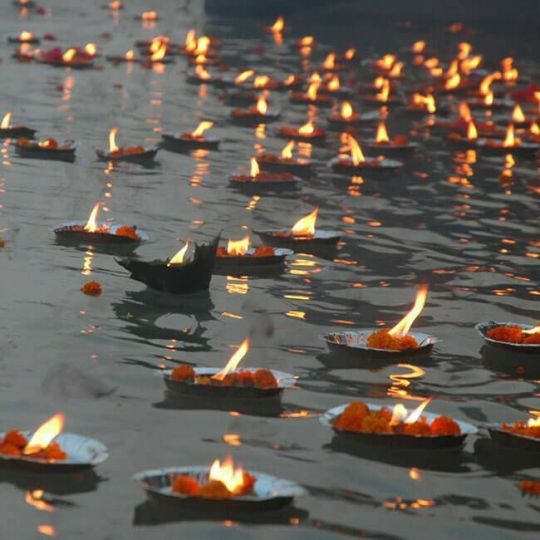
117 notes
·
View notes
Note
hello, this is may be incoherent or long so apologies.
how do you reconcile with subscribing to hinduism in any way despite the horrific violence and atrocities it propagates? i was raised hindu (but I’m now a staunch atheist) and i was never religious but like you all i did enjoy the myths and the characters in it. but that was before i became politically conscious and came to know about the suffering wreaked by the caste system and the insanity of hindutva. hindutva ideology is so widespread now, casteism shows no signs of reducing and both are irretrievably linked to hindu gods and practices. i know none of the major world religions can claim to be unproblematic but as an indian, hinduism is the biggest problem, so to speak. reading works of Dr Ambedkar and Periyar only reaffirmed my beliefs that hinduism is extremely oppressive and dangerous. ik you all are aware of the oppression and are anti hindutva and anti caste but still have you faced dissonance by continuing to positively interact with hinduism despite this?
i don’t mean any offense, i am genuinely curious.
Hi, yes, I have 100% faced this dissonance. There was an extended point in time when I sort of backed away from engaging with mythology only because of the dissonance i was experiencing with regards to interacting with the myths. That really gave me some time to think through why I felt so uncomfortable with this.
But now I intend to engage whole heartedly because- in the end they're all stories. Stories which have gone through few hundreds of years of oral traditions, stories which contain the morals and values of yesterday. Whether or not they were 'itihasa' is no longer relevant because these stories have passed through the hands of many people.
I almost feel like its my duty now to imbibe a different kind of meaning to these stories. One which breaks down the 'holy' ness of them and gives a new lens through which to look at the characters. If you have noticed, Hindu gods are used as tools to justify some of the most heinous behaviours while practicing Hinduism. I'm just.....participating in a more creative process where we make our OWN meaning of the myths. Its one way I'm able to make peace with this.
-Mod G
23 notes
·
View notes
Note
Before I start I want you to know that I'm not trying to come off as rude here. I just wanna inform you in a friendly manner, and I hope you answer this ask the same way :)
I feel like most of the liberals are talking about the Aryan MIGRATION theory, and not the AIT, because that one has been debunked like 3 decades ago.
Its the AMT that's the most consistent with the evidences *as of now*.
As for the "Pashupatinath" seal, there is still debate going on about it, but it mostly likely isn't Shiv due to his much later entry into the Hindu pantheon (we can see that he wasn't mentioned in the Rig Veda and the earliest Vedas as well). Also I'm pretty sure the Saraswati river is no longer considered a myth. So it's still assumed the IVC didn't have any religion to begin with (atleast not till the end of it when the AMT actually happened and the Aryans mingled with the IVC people *peacefully*, and so did the cultures). Also hopefully the findings of IVC being around 8000 years old would become true if we have enough evidence to factualize it.
Even the Dwarka case has been highly debated. Not saying that it wouldn't have existed but it's still been debated, since there have been accounts of many underwater cities, and hence it's not clear if it's Dwarka or some other city.
In conclusion I'm saying is that probably most of the leftists are talking about the AMT and not AIT (if they're still bringing up the latter then they're simply stupid atp), and we have the evidence of AMT in every way possible, at least now. Later on it might be a different story altogether.
Anyways what I'm trying to say is that history is a complex matter, and we can hypothesize all we want but at the end of the day a hypothesis has to go through a long series of stages and processes to be finally accepted as a fact. And yes I'm not saying there can be biases in this history field. We have seen it in the case of Max Muller and we know there are shitlings everywhere. But again, today the evolution of Hinduism and IVC is treated the same way they treat the Mayan civ., or the Greek civilization etc. So there's mostly (again, *mostly*) no bias in the field towards Indians today.
And hence with enough deep-rooted undeniable evidences in the future, who knows, maybe all of these hypotheses might come true.
(PS: Ignore my grammatical/spelling mistakes kindly thank you)
Firstly, we explicitly mention that the leftists use AIT here because they do. They are explicitly saying that “Aryans” came as invaders from outside and are oppressors. I've (and it's not too hard to find) seen multiple leftist blogs and channels claim that tribals are the one true natives which is absolutely stupid hence the post.
If they were talking about migration, then why are they harping about aryans being opressors and all upper caste = aryans?
Also please do some more reading before dismissing Shiva’s existence during and prior to the vedic era because there is mentions of rudra along side another deity as seen in mahamrityunjay mantra that talks about 3 eyed Shiva. Not just this, Karpur Gauram mantra is also in Yajur Ved. Contrary to your beliefs Shiva wasn't “added” later on.
Look up Rig Veda, Shiva Sankalpa Suktam, 18th Mantra.
Again, in Yajurveda
ईशानस्सर्वविद्यानां ईश्वरस्सर्वभूतानां ब्रह्मािधिपतिर्ब्रह्मणोऽधिपतिर्ब्रह्माशिवो मे अस्तु सदाशिवोम्।
Clear mentions of Ishana & Sadashiva.
Namaste Astu Bhagavan Visvesvaraya Mahadevaya Tryambakaya Tripurantakaya Trikaagni Kaalaaya Kaalaagni Rudraya Nilakanthaya Mrityunjayaya Sarvesvaraya Sadasivaya Sriman-Mahadevaya Namah.
In shri rudram.
Which again, if you leave it upto Experts they will debate it to be something entirely different, just as seen in Sanauli Archelogical findings and Pashupatinath or "Pashupatinath" seal, three headed deity in a yogic pose. Ayodhya site is still "disputed" according to some "experts". Biases are very much still alive.
"He approached the brhati meter, and thus the Itihasas, Puranas, Gathas andNarasamsis became favorable to him. One who knows this verily becomes the beloved abode of the Itihasas, Puranas, Gathas and Narasamsis." (Atharva Veda15.6.10–12)
तमि॑तिहा॒सश्च॑ पुरा॒णं च॒ गाथा॑श्च नाराशं॒सीश्चा᳚नु॒व्य᳡चलन्॥११॥ इ॒ति॒हा॒सस्य॑ च॒ वै स पु॑रा॒णस्य॑ च॒ गाथा᳚नां च नाराशं॒सीना᳚ञ् च प्रि॒यं धाम॑ भवति॒ य ए॒वं वेद॑ ॥१२॥ He went away to the great region. Itihāsa and Purāṇas and Gāthās and Nārāśaṃsīs followed him. He who possesses this knowledge becomes the dear home of Earth and Agni and herbs and trees and shrubs and plants. ~ Atharva Vēda (Śaunaka Śākhā), Pañcādaśa Kāṇḍam, Ṣaṣṭhaḥ Sūktam.
This and many other verses tell us to not dismiss significance of Purana, Puranas detail lore and revelations of Lord Shiva has himself a puran dedicated to himself and finds mentions in almost all puranas. Although with no writer of Ved it can be assumed all its knowledge must've been passed down orally for a much longer time. Agni, Indra, Mitra etc are widely talked deities in veds but they're barely worshipped today, i suppose that's how practices evolve - maybe 2000 yrs from now nobody will remember Krishna (ouch). I don't personally think puranas are something foreign because they don't contradict or demean Vedas they're based on them and respect the texts properly
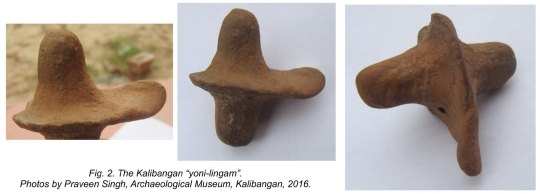
^ this one is believed to be the oldest shivling about 4,300 yrs old found in kalibangan only
Even Swastika was found in the Indus Civilization.
I still haven't found one person that vouch for AIT or AMT not deny indigenity of Hindus, shocked and pleasantly surprised that you did. (Reveal thy secret) However, you claim there are ample evidence of AMT yet you didn't link any. While we're onto that, there is infact mentions of out-of-india migrations in ved itself, but no scripture (unless hey we figure out indus script!) talk of intrusion of a foreign Aryan group.
There was a comment made by a Tambram in my older post where they confirm AIT is used to deny their indigenity to india almost wildly!
And thank you for accepting that the Saraswati is no longer considered a myth because it confirms the older datings of rig veda and how it is much older than presently assumed, which is way earlier than the proposed timeline of the arrival of “aryans” into India (*side-eyeing muller*).
Maybe tomorrow we figure out something else, debates are good, I'm not cementing my beliefs about anything, there is always a chance of finding out even more about something. I'm open to reading evidences abt AMT, send them in.
#aryan invasion theory#come with sources next time#ask#anonymous#fellow mutuals have you heard of this aryan “migration” theory? the one with ample evidence?
17 notes
·
View notes
Text
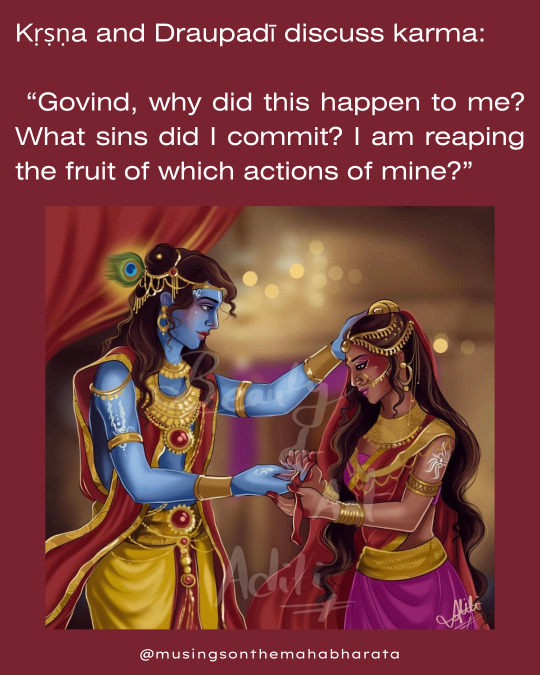
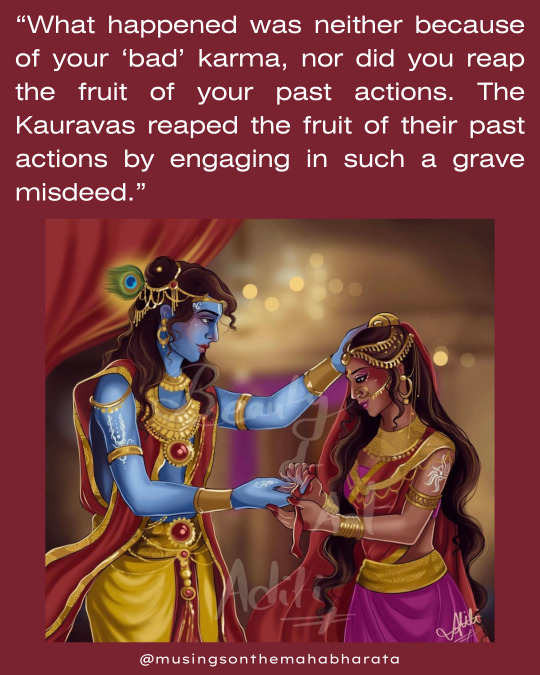
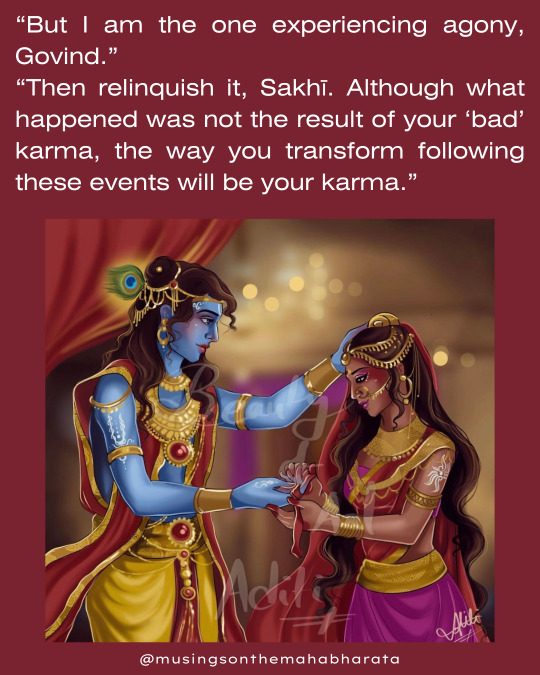
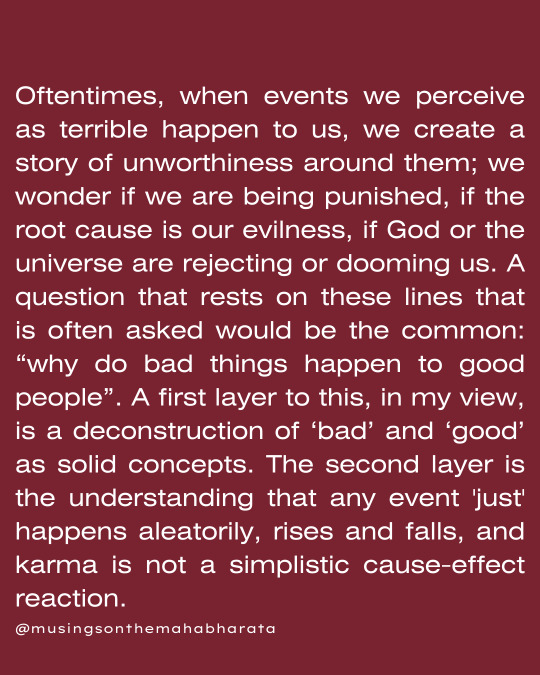

Kṛṣṇa and Draupadī Discuss Karma
One of my favourite interpolations from modern tellings of the Mahābhārata is a conversation between Draupadī and Kṛṣṇa that occurs after Draupadī's sexual assault and attempted disrobing by the Kauravas.
Clutching his feet, Draupadī sobs: "Govind, why? Why did this happen to me? What sins did I commit? I am reaping the fruit of which actions of mine?”
Picking her up and caressing her hair, Arya tells her: "What happened was neither because of your ‘bad’ karma, nor did you reap the fruit of your past actions. It was the Kauravas who reaped the fruit of their past actions by engaging in such a grave misdeed. Sakhī, this is the meaning of karma."
"But I am the one experiencing agony, Govind."
"Then relinquish it, Sakhī. Although what happened was not the result of your 'bad' karma, the way you transform following these events will be your karma."
This is such a beautiful and profound exchange which offers rich nuances to the teaching of karma. Oftentimes, when events we perceive as terrible happen to us, we create a story of unworthiness around them; we wonder if we are being punished, if the root cause is our evilness, if God or the universe are rejecting or dooming us. A question that rests on these lines that is often asked would be the common: “why do bad things happen to good people”. A first layer to this, in my view, is a deconstruction of 'bad' and 'good' as solid concepts. The second layer is the understanding that any event 'just' happens aleatorily, rises and falls, and karma is not a simplistic cause-effect reaction.
Karma encapsulates, in my understanding, the ingrained patterns held within us through which we act, react, and process the world around us and the events that occur in our lives. There is freedom from karma in finding new ways of reacting, engaging, processing.
Finally, a significant teaching encased in this interpolation is that the way someone treats us, ultimately, is a reflection of their karma (ingrained patterns), and not a reflection of our ingrained patterns. We cannot control another's patterns, but we can aim to understand and rewire ours accordingly.
The magnificent art: @beauty_of_art_aditi.
#mahabharata#mahabharat#krishna#draupadi#sakhi#sakha#govind#govinda#hare krishna#mahabharatam#itihasa#hinduism#hindu art#yajnaseni#panchali#mahabharat star plus#hindu#hindu mythology#karma#spirituality#shri#teaching#freedom#mahabharata art#raksha bandhan#religion#sanskrit
154 notes
·
View notes
Text

Draupadī and the Dharma of Women
"Strī" translates from Sanskrit as "woman", while "dharma" is a complex principle with manifold meanings, in this context bearing the significance of "duty"; in simple terms, it refers to an individual conduct that contributes to harmony in a greater framework, be it societal or cosmological.
Draupadī is lauded in the Critical Edition of the Mbh several times as being the epitome of strī-dharma, of the dharma of women. (2.62.20; 2.63.25-30; 2.64). Interestingly, she is most intensely praised as such after she angrily (yet elegantly!) questions the men of the royal court and demands justice, being anything but meek and demure. I would argue that this showcases that in the Mahābhārata voicing oneself and standing up for oneself are considered responsibilities belonging to the dharma of women.
To nuance this even more, Eknath Easwaran, an eminent translator of the Bhagavadgītā, highlights that, etymologically, the term "dharma" can be traced back to the root 'dhri', which means 'to support, hold up, or bear'; "dharma" therefore translates as "that which supports", and Draupadī's conduct therefore supports both society and cosmology.
In the Sanskrit Mbh, Kṛṣṇa does not appear in the sabhā (royal hall) at the time of Draupadī's attempted disrobing, and no direct mention of him is made during this episode. In a conversation with Dr. Brian Black, a Mbh researcher whom I had the honour to have as my MA supervisor, we talked about the implication of this, which is that Draupadī's adherence to strī-dharma appears to be that which shields her. A question that could arise here could be whether there is a contradiction between the Critical Edition and modern renderings of the Mahābhārata, with Draupadī being shielded by her dharma as opposed to by Kṛṣṇa.
For me there is no contradiction.
Kṛṣṇa in the Bhagavadgītā establishes himself as 'the eternal dharma' (14.27); and so, Kṛṣṇa is all dharmas, including strī-dharma. We tend to associate Kṛṣṇa with a fully-fledged incarnation; but he is beyond that. I would maintain that, as the divine principle, he exists in Draupadī's consciousness and in her actions as dharma (and not only!). The latter renditions, for me, in which he is physically there, only bring forth in tangible projections the internal process extending Draupadī's consciousness.
You can find me on IG: @musingsonthemahabharata.
Painting: Jadurani Dasi, 1986.
#mahabharata#mahabharat#draupadi#krishna#draupadi's disrobing#hindu art#mahabharatam#panchali#hindu mythology#hinduism#hindu#hindu philosophy#itihasa#sanskrit#phd#phd scholar#dharma#stri dharma#bhagavadgita#bhagavad gita#bhakti#vishnu
96 notes
·
View notes
Text



Ashta Nagas 🐍 Name of Ashta Nagas – 8 Snake Gods or Serpent Deities In Hinduism, the Ashta Nagas are eight gods who are snakes. South India, especially Kerala, South Karnataka, and parts of Tamil Nadu, is where they are most famous. Each of the eight snake gods is honored on its own. List of Ashta Nagas- Name of 8 Snakes God Ashta Nagas are worshiped to cure of skin diseases, pregnancy problems and to avoid all kinds of problems in the zodiac caused by Rahu and Ketu being in bad places in Horoscope. People also belive that making offerings to the eight nagas will help them find hidden wealth and happiness. They are Anantha or Sesha Naga Gulika Vasuki Shankapala Thakshak Mahapadma Padma and Karkodaka Chapter 5.2 - Ashtanaga—Eight important Nagas Out of the one thousand serpent children Kadru had, 8 important nagas are called Ashtanagas. They are: 1Ananta, 2 Vasuki, 3 Takshaka, 4 Karkotaka, 5 Shankha, 6 Padma, 7 Mahapadma, 8.Gulika. They are the nagas that are worshipped. Many of the ashtanagas are important characters in the Itihasa Puranas. Ananta He is the most important of the ashtanagas. The name itself means one who has to end. It means he is infinite. About the birth of Ananta, ValmikiRamayana says like this. From Mahavishnu came Brahma and from Brahma came the Prajapatis. From this it can be surmised that Ananta is a Prajapati.But as per the Mahabharata,Ananta is born to Prajapati Kashyapa in his wife Kadru. When Kadru and Vinatha, two of the wives of Kashyapa, were fighting and to win in the bet Ananta was asked to hang from the tail of Iravata. Ananta lost his peace and so went to places of pilgrimage and fasted. Immersing himself in reflections on Brahma, he obtained a boon from him. The boon was that even if the entire universe burns down, Ananta will not perish. That is how Ananta becomes Adi Shesha and the leader of nagas. He also became the bed and shade of Mahavishnu. It was because of the boon he received he went into the Hades and began to hold the worlds upright supporting them with his hoods. It is garuda that helps Ananta in this task of holding the worlds. Ananta has one thousand hoods and on the main hood there is the mark of Svastika. This indicates the Sun and Vishnu. As weapons he holds a plough in one hand and an iron pestle or mace in the other. He is served by Shridevi, Varuni Devi, Nagakanyaka and many other goddesses. The belief is that Ananta dwells in the abode of Varuna in the West. Ananta is not merely the eldest of the brood, but he is the noblest and occupies an elevated niche in the hierarchy of things. He is softspoken, philosophical and has an ascetic character. He is the one who leads the group of ideal serpents. Two of Ananta avatars are Lakshmana, the younger brother of Rama and Balrama, the elder brother of Krishna .The Anantashayanam indicates the mutual relations between Vishnu and the Serpent. Vasuki He is the son of Kashyapa and brother of Ananta. He spent his childhood with his parents. As a devote of Shiva, he dwells in the body of Shiva. According to the Puranas, it is thought that Vasuki is the ring on the finger of Shiva. In the quarrel between Kadru and Vinata, Vasuki did not support his mother and so he was cursed and therefore he had to live away from his mother in a different group. Vasuki has a special place amongst the important deities of Shaivas. Vasu means diamond. The one with a diamond on the head is Vasuka, that is Kashyapa. the son of Vasuka is Vasuki. Vasuki has the white colour of diamonds. When the Devas and Asuras churned the Ocean of Milk, they used Vasuki as the coir for binding the Manthara Mountain which was used as the churning stick.
#vedic#hare krishna#iskcon#krishna#bhakti#srila prabhupada#bhagavad gita#Hindu#Hinduism#Bharat#India
2 notes
·
View notes
Note
the Vedas aren't primarily narratives though, they're layers of poetry (with the same principles depicted with varying mythological imagery), then ritual commentary, and then theological/philosophical accretion. this is very different from the Tanach, which is primarily (alleged) history with law codes.
there have been Veda-believing Hindu schools which deny the gods' existence outside of being ritual functions, and most if not all modern Hindus have a substantially different theology (centered on Vishnu or Rudra) from that the Vedas would seem to depict.
so what belief in the Vedas entails is very different from belief in the Tanach.
of course some call anything to do with the religion the Vedas, same way Jews call reading the whole corpus including the Talmud as studying Torah.
the Ramayana and Mahabharat are Itihasa, which is smirti rather than shruti, but their narratives are far more popularly known than the Vedas themselves.
hmmm. yeah. that makes sense. i was kind of conflating them. the rigvedas have narrative but not that much
7 notes
·
View notes
Text
Who is radha?
Lord Krishna is the Supreme Personality of Godhead (īśvaraḥ paramaḥ kṛṣṇaḥ). He is the cause of all the causes (sarva-kāraṇa-kāraṇam). He is the origin of all the devatas (aham ādir hi devānāṁ). All the Vedas glorify Lord Krishna alone (vedaiś ca sarvair aham eva vedyo). He is the unborn Lord that takes on many appearances in this world (ajayamano bahudha vijayate). He is the antaratma (inner controller) of all the living entities (akhila-dehinām antarātma-dṛk).
Lord Krishna is Nirguna- completely beyond the material gunas (harir hi nirguṇaḥ sākṣāt). Although He is Nirguna, He is the abode of all-auspicious qualities (guṇāṁś ca doṣāṁś ca mune vyatīta samasta-kalyāṇa-guṇātmako hi).
Lord Krishna has no form yet His beautiful form (anirdesya vapuh) enchants even the cupid. He has no hands and feet (apāṇi-pāda) yet the Gopis are embraced by His serpentine arms and He runs on His tender feet, in fear of Mother Yashoda. He has no eyes, yet His sidelong glances destroy the patience of the millions of Gopis. Lord Krishna is Satyam, Jnanam, Anantam Brahma. He is all-pervading Brahman, yet He is found crawling in the corner of the courtyard of the house of Nanda Maharaja (satyaḿ-jñānam-anantaḿ nityam anākāśaḿ paramākāśaḿ goṣṭha prāńgaṇarińgaṇalolam anāyāsaḿ paramāyāsam).
Through Lord Krishna’s various expansions of expansions of expansions, countless universes are created, maintained, and ultimately destroyed (yasyāṁśāṁśāṁśa-bhāgena viśvotpatti-layodayāḥ). Following His order, Lord Brahma creates the universe and following His order, Lord Hara destroys the creation (sṛjāmi tan-niyukto ’haṁ haro harati tad-vaśaḥ). He, however, is completely independent (abhijñaḥ svarāṭ).
All the Vedic literatures describe Him as Supreme Brahman (kṛṣṇaṁ paraṁ brahma). The form of this Supreme Brahman is human-like (gūḍhaṁ paraṁ brahma manuṣya-liṅgam). That humanlike form is eternally a son of Nanda Maharaja and Mother Yashoda. He cannot be reached by exercising our minds, words, and consciousness. (namo girāṁ vidūrāya manasaś cetasām api)
Lord Krishna is the beginning, middle, and end of all the Vedas, Puranas, Itihasas, etc (ādāv ante ca madhye ca hariḥ sarvatra gīyate). In fact the very word ‘’OM’’, with which all the Vedic Mantras begin, is the sound representation of Lord Krishna (praṇavaḥ sarva-vedeṣu). All the various names found in the Vedas such as Rudra, Indra, Agni , Soma, Mitra, etc glorify Lord Krishna alone (namani sarvani yam vishanti tam vai vishnum paramam udaharanti).
Lord Krishna is the master of all the Yogis and the Brahmavadis who want to experience the bliss of Kaivalya or Nirvana (kaivalya-nirvāṇa-sukhānubhūtiḥ). The son of Devaki can offer all types of Mukti (bhagavān devakī-putraḥ kaivalyādy-akhila-pradaḥ).
What then to speak about the supreme glories of His dear devotees? Lord Krishna becomes the ultimate giver of bliss for His ananya bhaktas who reject even the Kaivalya or impersonal Mukti (na gṛhnanti vinā mat-sevanaṁ janāḥ), which are generally held in high regard by the many. In His form of Lord Narayana, He is eternally a master of Lakshmi Devi. He is the master of all the innumerable Shaktis headed by Sri, Bhu, Nila, etc.
In the various Yajnas, Lord Krishna is glorified with eloquent prayers such as follows
yaṁ brahmā varuṇendra-rudra-marutaḥ stunvanti divyaiḥ stavair vedaiḥ sāṅga-pada-kramopaniṣadair gāyanti yaṁ sāma-gāḥ dhyānāvasthita-tad-gatena manasā paśyanti yaṁ yogino yasyāntaṁ na viduḥ surāsura-gaṇā devāya tasmai namaḥ Unto that personality whom Brahmā, Varuṇa, Indra, Rudra, and the Maruts praise by chanting transcendental hymns and reciting the Vedas with all their corollaries, pada-kramas and Upaniṣads, to whom the chanters of the Sāma Veda always sing, whom the perfected yogīs see within their minds after fixing themselves in trance and absorbing themselves within Him, and whose limit can never be found by any demigod or demon — unto that Supreme Personality of Godhead I offer my humble obeisances.- Srimad Bhagavatam 12.3.1
Now, there is one special cowherd girl who brings this Supreme Personality of Godhead, Lord Krishna, completely under Her control. Her name is Sri Radha.
A very special cowherd girl, the dust of whose lotus feet Krishna reveres with great humility, is Sri Radha. A very special cowherd girl, who makes Krishna mad and faint in ecstasy is Sri Radha. A very special cowherd girl who is Krishna’s highest pleasure potency is known as Sri Radha. A very special cowherd girl, who is nondifferent from Krishna, just as the shakti (energy) and shaktiman (energetic) are nondifferent and just as the sunlight and sun are nondifferent, is known as Sri Radha
#hare krsna#krsna#krishan#lord krishna#hare krishna#krishna#iskontemple#iskon#astrology numerology vedicastrology#vedic astrology#lordkrishna#lordvishnu#lordram#lordshiva#harekrishna#vedas#vedic astro observations#astrology#vedic jyotish online
2 notes
·
View notes
Text
Passion for history makes Khurda daily wager turn to writing
MANOJ KUMAR JENA, OP Bhubaneswar: At a district-level function held at Khurda last month on the occasion of ‘Magha Saptami’, a little-known writer was felicitated for his research work on the war history of the area, which was well appreciated by the audience. This was because the author of ‘Khordha Itihasa Re Juddha,’ depicting the battles fought by ‘Paikas’ (the erstwhile warrior clan of…
0 notes
Text
Relief
A feeling of reassurance and relaxation following release of anxiety or distress.
--------------------------
Reminder: This is a work made from my own imagination, with inspiration from the actual itihasa, and not meant to hurt anyone's sentiments.
Unedited: You've been warned.
--------------------------------------------------
Hanuman held his amma's chudamani carefully in his grasp, as he briskly returned back to Kishkinda with his comrades.
As their feet moved across the changing terrains which led back to their camp, one thing that prevailed in his mind was 'How would my Prabhu's worries diminish quickly?'
He didn't care if the difference was by minutes- or even mere seconds.
Not a moment more that lasted even as short as a blink of an eye should his Prabhu suffer.
He closed his eyes, as he thought on how he could eradicate the worries that clouded his Prabhu's mind, the fog as thick as the fumes that raised from the fire that spread across Lanka.
"Janaki-"
No. No, he couldn't say that. His Svami wouldn't know if they'd seen his Amma or not, by only mentioning her pure name.
"In Lanka-"
No. Not that, either. His Svami didn't know where this Lanka was- what even was it. He must be made aware about the state his Amma is in, first. It was the reason he was sent.
He took a deep breath, as he saw the humble cave that Shri Ram resided in, as he quickened his pace, exclaiming so loudly, that his voice could be heard inside the cave, even before he entered his Svami's gaze.
"కనుగొంటిని జానకిని, తండ్రి!"
(Kanugontini Janakini, Tandri!)
(I saw Sita with my eyes, prabhu!)
The second his voice reached the ears of his father- oh, the relief that washed his troubled soul was like the sea's tide- the fierce waves slowly calming, as the period of darkness finally led to the first ray of light.
--------------------------------------------------
जय सीता राम लक्ष्मण की!
EEEEEEEEEEEEEEE
Hope y'all liked this piece, IVE BEEN ON A ROLL AHHAHA
This piece is inspired by a scene in the Telugu movie Sampoorna Ramayanam- where Hanuman (I love him so much omg) runs to Shri Rama, saying "Kanugotini Janakini!" From the moment he entered the camp, Ram heard him from like 20 meters away
It is said that Hanuman wished for Rama's worries to diminish as soon as possible, not wanting him to suffer a second more than it was necessary, and to make sure no doubts arose- that he thought of what would tell him that they'd found Sita.
I personally loved the scene so much I recommend watching it it's so beautiful I cry everytime hsjejeje
On that note, constructive feedback, criticism and comments on the story are always welcome!
Stay safe, healthy and hydrated<3
Have a good one, folks!
#hindublr#desiblr#fluff#ram#ramayana#fanfic#hindu#rama#fanfiction#shri rama#sri rama#sita#sita x ram#writers of tumblr#writers on tumblr#angsty fluff#desi tag#desi#desi tumblr#hindu mythology#hinduism#ill probably edit the tags later idk
43 notes
·
View notes